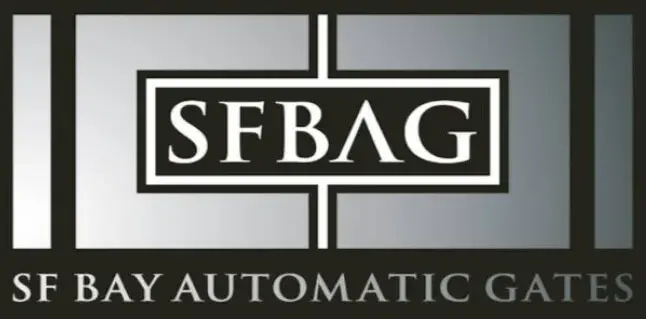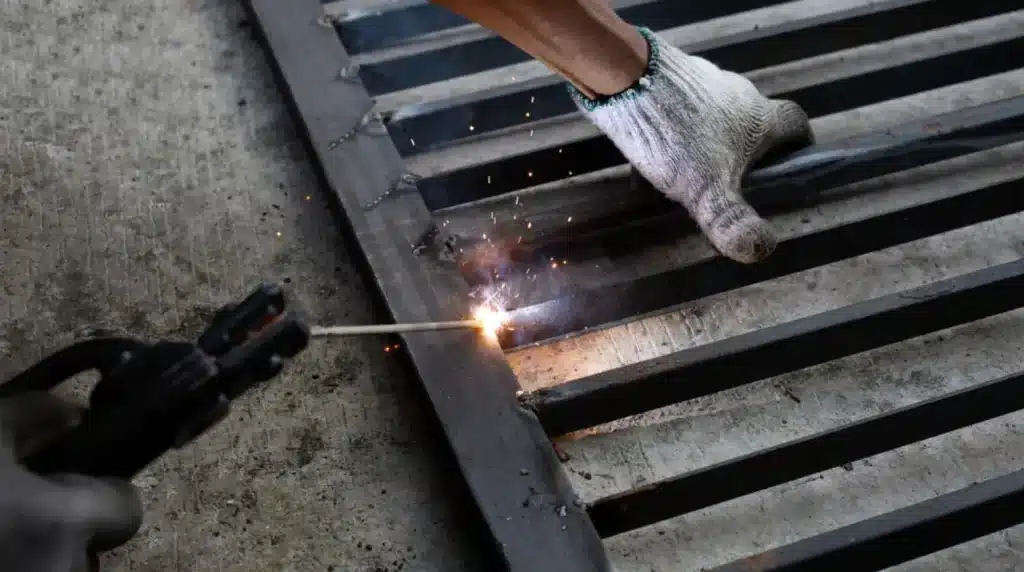When a residential or commercial gate malfunctions in the Bay Area, property owners face decisions about how to proceed with necessary gate repair. San Jose residents have learned that proper assessment before repairs not only saves money but also ensures the right solutions are implemented. SF Bay Automatic Gates experts recommend a systematic evaluation process before undertaking any repair work, as this can prevent unnecessary replacements and help identify underlying issues that might otherwise go unnoticed.
Automatic gates represent significant investments in both security and convenience, with complex mechanical, electrical, and sometimes hydraulic systems working together to provide reliable operation. When problems develop, understanding the nature and extent of the damage becomes crucial to effective repair planning. This comprehensive guide outlines professional assessment techniques used by gate repair specialists to diagnose issues accurately and develop appropriate repair strategies.
The difference between minor maintenance issues and major structural damage isn’t always obvious to untrained observers. Learning to recognize key warning signs and understanding how various gate components interact helps property owners make informed decisions about their gate repair needs. While some minor issues might be suitable for DIY fixes, others require professional intervention to prevent further damage or safety hazards.
Common Gate Damage Scenarios and Their Assessment Approaches
Different types of gates—sliding, swing, barrier arm, vertical lift, or specialty designs—each present unique vulnerabilities and potential failure points. SF Bay Automatic Gates technicians encounter various damage scenarios regularly across San Jose properties. Understanding these common issues provides valuable context for assessing your own gate’s condition.
For sliding gates, track damage often manifests as irregular movement, squeaking, or gates that become stuck at certain points. Proper assessment involves examining the entire track length for debris accumulation, misalignment, warping, or separation from mounting points. The rollers or wheels should turn freely without wobbling, and the gate should move smoothly when manually operated after disengaging the motor.
Swing gate damage frequently involves hinge stress, motor arm connection points, or ground settling that affects alignment. Assessment begins with observing the gate’s movement path for any deviation from its original design arc. Inspecting hinges for rust, wear, or loose mounting hardware helps identify potential failure points before catastrophic damage occurs. The connection points between motor arms and gate panels require particular attention as these often experience significant mechanical stress.
Barrier gates used in commercial settings commonly suffer damage from vehicle impacts or motor burnout from excessive use. Proper assessment includes checking the arm for straightness and examining mounting points for security. The counter-balance spring system requires professional evaluation as improper tension adjustments can cause operational issues and safety hazards.
Weather-related damage affects all gate types but presents differently depending on construction materials. Metal gates may develop rust or corrosion, while wooden gates might suffer from rot, warping, or insect damage. A thorough assessment includes examining all structural elements for integrity, especially at joints and connection points where water might collect or penetrate.
For all gate types, electrical system damage requires specialized knowledge to properly assess. From control boards to safety sensors, wiring connections to motor components, electrical issues can range from simple fixes to complex system replacements. SF Bay Automatic Gates professionals recommend systematic testing of each component to isolate problems before beginning any gate repair process.
Critical Components to Examine During Gate Damage Assessment
Effective gate repair begins with a component-by-component examination using a structured approach. This methodical assessment helps ensure no potential issues are overlooked and that repair efforts address root causes rather than just symptoms. When SF Bay Automatic Gates specialists conduct assessments in San Jose neighborhoods, they typically focus on several key areas that commonly develop problems.
The gate operator or motor serves as the system’s power center and requires careful evaluation. Signs of motor problems include unusual noises, overheating, slow operation, or complete failure to respond. Assessment should check for proper voltage at the motor terminals, signs of water damage to electronics, and mechanical binding in the drive train components. Motor age becomes relevant when considering repair versus replacement options.
Control board functionality directly impacts overall system operation. Lightning strikes, power surges, or simple age-related deterioration can damage these sensitive electronic components. Assessment includes checking for visible damage like burned components or swollen capacitors while also testing input and output functions. Many modern control boards feature diagnostic LEDs that help identify specific failure modes.
Safety devices constitute a critical aspect of any automatic gate system and require particular attention during damage assessment. Photoelectric eyes, pressure sensors, loop detectors, and edge sensors all work together to prevent accidents. A comprehensive gate repair assessment must verify each safety device functions properly, as malfunctions can lead to serious injury or property damage.
Remote control systems and access control integration represent another potential failure point. Signal interference, programming errors, or receiver damage can prevent proper operation. Assessment should include testing multiple remote devices, checking receiver connections, and verifying compatibility between components. In communities throughout San Jose, gate repair often includes addressing these wireless communication systems.
Structural components including posts, panels, frames, and mounting hardware require careful visual inspection for signs of damage, corrosion, or fatigue. Assessment should include checking for plumb and level positioning, as ground shifting commonly affects gate alignment over time. Concrete footings should be examined for cracking or heaving that might compromise structural integrity.
Weather sealing and protective finishes prevent premature deterioration in the variable California climate. Assessment includes checking for peeling paint, rust development, cracked seals, or water penetration points. Identifying these maintenance issues early can prevent more extensive gate repair needs developing over time.
Professional vs. DIY Assessment Techniques for Gate Repair Projects
When facing potential gate repairs, San Jose property owners often wonder whether professional assessment is necessary or if DIY evaluation might suffice. Understanding the advantages and limitations of each approach helps in making an informed decision based on the specific situation. While minor issues might be suitable for homeowner assessment, complex problems typically benefit from professional expertise.
Professional gate repair technicians bring specialized knowledge developed through training and experience. They recognize subtle indicators that might escape notice during amateur assessment and understand how different components interact within the system. SF Bay Automatic Gates technicians utilize diagnostic equipment including multimeters, torque gauges, and alignment tools that most homeowners don’t possess. This specialized equipment allows for precise identification of issues not visible through simple observation.
Industry-specific knowledge of manufacturer standards and common failure points allows professionals to quickly identify problems that might take homeowners hours to research. They understand the safety implications of different malfunctions and can prioritize repairs based on risk factors. Professional assessment also typically includes documentation of findings with specific recommendations for repair or replacement.
DIY assessment, while more limited, still offers value for identifying obvious issues. Homeowners can perform basic visual inspections looking for damaged components, loose connections, or unusual operation. Testing remote controls, listening for unusual noises, and observing the gate’s movement patterns provides useful information even without specialized knowledge. Taking photos or videos of problematic operation helps when consulting with professionals later.
Basic tools including a flashlight, tape measure, level, and smartphone can assist in DIY gate assessment. Documenting measurements and specific behaviors helps track whether problems are worsening over time. For simple mechanical issues like loose hinges or misaligned sensors, homeowner assessment might be sufficient to identify necessary gate repair steps.
Safety considerations must remain paramount regardless of assessment approach. Power should always be disconnected before examining electrical components, and proper precautions taken when working around heavy moving parts. Some gate repair situations present significant risks to untrained individuals, particularly those involving high-voltage components, spring tension systems, or large-scale structural issues.
Cost considerations influence many assessment decisions. While professional evaluations typically involve service charges, they often save money long-term by identifying the most cost-effective repair approach. DIY assessment carries no immediate cost but risks overlooking critical issues that might develop into more expensive problems if left unaddressed.
Step-by-Step Gate Damage Documentation Process for Accurate Repair Estimates
Thorough documentation during the assessment phase proves invaluable when planning gate repair work. Whether for insurance claims, contractor estimates, or personal reference, a systematic documentation process ensures no important details are overlooked. The following methodology, recommended by SF Bay Automatic Gates specialists, helps capture relevant information for accurate repair planning.
Begin with comprehensive photography from multiple angles and distances. Overall shots establish context while close-ups document specific damage points. When photographing electrical components, ensure proper lighting to capture details clearly. Video documentation proves particularly useful for capturing intermittent problems or demonstrating operational issues that static images can’t convey.
Create detailed written descriptions of each damaged component, noting specific measurements where relevant. Document any serial numbers or model information from motors and control boards, as parts compatibility often depends on these details. Note the timing and circumstances of when problems occur, including weather conditions that might affect operation.
Compile maintenance and repair history including dates of previous service and specific work performed. This historical context helps identify recurring problems that might indicate underlying issues requiring more extensive gate repair approaches. Documentation should include the gate’s age, original installer information, and any warranty details that might still apply.
Catalog all symptoms and their frequencies, noting whether problems appear consistently or intermittently. Record any patterns regarding when malfunctions typically occur, such as during specific weather conditions or times of day. Note any recent changes to the system or surrounding environment that might have contributed to current issues.
Collect manufacturer documentation including installation manuals, wiring diagrams, and maintenance recommendations. These resources provide valuable reference information when planning repair strategies. For older systems, this documentation might require online research or manufacturer contact if original paperwork is unavailable.
Take systematic measurements of key structural elements including gate dimensions, post positions, and current alignment angles. These measurements help identify deviations from original specifications that might indicate structural shifting. For access control systems, document current programming details and user code information that might need restoration after repairs.
Organize all documentation chronologically and by component type for easy reference. This systematic approach creates a comprehensive assessment package that proves invaluable whether pursuing DIY gate repair or working with professional technicians. Throughout San Jose and surrounding communities, SF Bay Automatic Gates professionals emphasize the importance of this documentation process for effective repair planning.
Structural and Systemic Evaluation for Long-Term Gate Repair
The gate repair assessment process requires attention to detail and systematic evaluation of all components. From mechanical elements to electrical systems, structural integrity to operational performance, each aspect contributes to the overall functionality and security of automatic gates. Through proper assessment, property owners can make informed decisions about necessary repairs, potentially saving significant expense while ensuring optimal performance.
When gate damage occurs, the natural tendency to focus solely on obvious visible problems often leads to overlooking underlying issues. Professional assessment methodologies examine the entire system holistically, recognizing how problems in one area might stem from failures elsewhere in the system. This comprehensive approach leads to more effective and lasting gate repair solutions.
For properties throughout San Jose, gate systems represent significant investments in security, convenience, and property value. Protecting these investments through proper damage assessment ensures they continue providing reliable service with minimal disruption. Whether facing minor maintenance needs or major repair requirements, the assessment process establishes a crucial foundation for effective restoration.
By following structured assessment protocols and properly documenting findings, property owners position themselves for successful gate repair outcomes. The time invested in thorough evaluation pays dividends through more accurate repair estimates, more effective repair strategies, and ultimately more reliable gate operation following service completion. When damage occurs, assessment knowledge empowers informed decision-making throughout the repair process.
Read more:
How Gate Repair Professionals Diagnose and Fix Issues in San Jose, CA | SF Bay Automatic Gates

